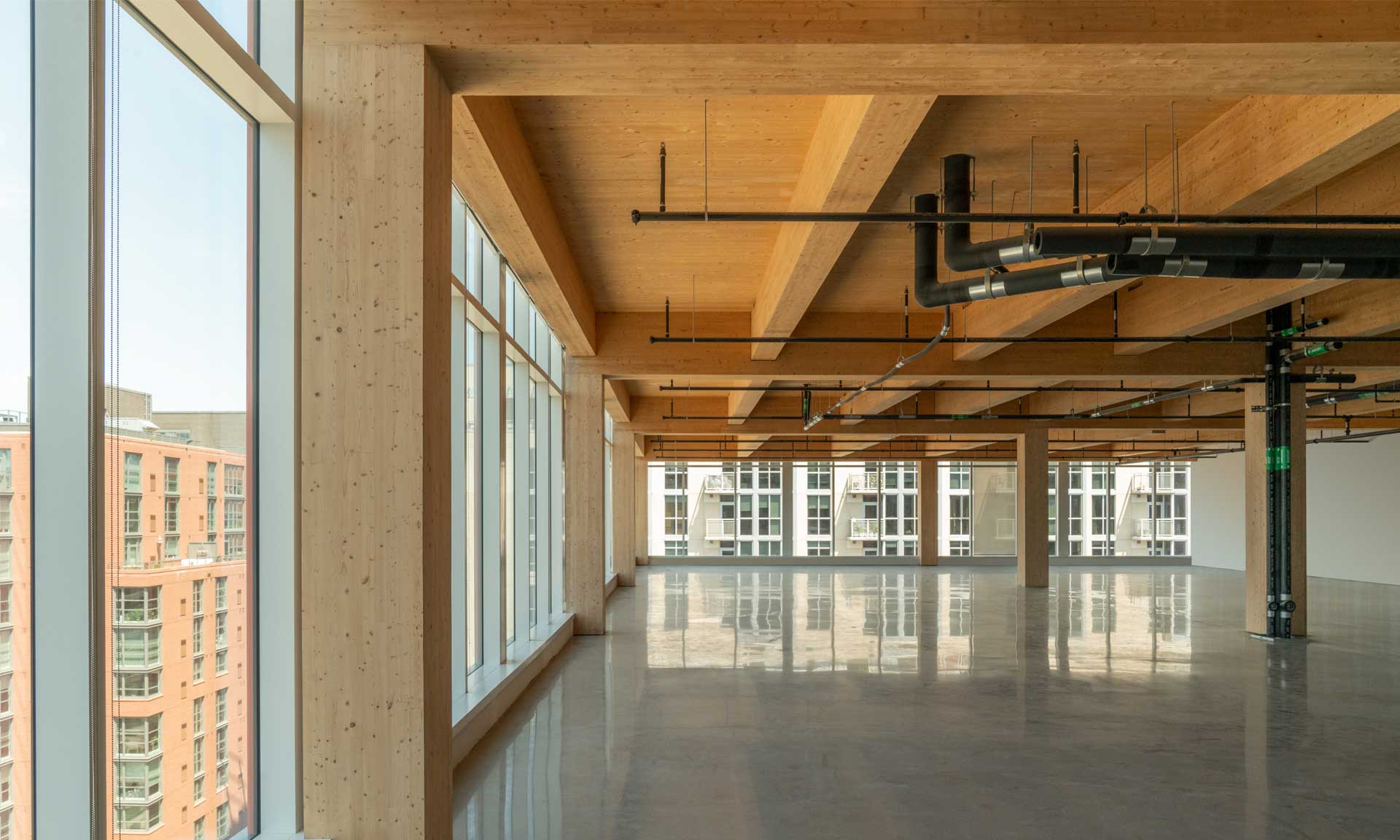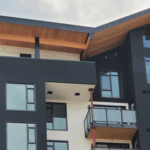Expert Tips
Delegated Design vs. Design Assist for Mass Timber Structures
Examines these common collaboration strategies, and how each adds value to the design process

Mass timber projects often benefit from engineering input beyond the Structural Engineer of Record (SEOR), especially when the SEOR has limited timber design experience. This input can come in the form of delegated design once much of the design is complete, or design assist, where guidance is provided throughout the project design phase. This expert tip highlights the differences between these approaches and key considerations.
Delegated Design
Delegated design involves transferring responsibility for an element or portions of the design from the SEOR to a contracted specialty engineer. The specialty engineer is often brought in at the beginning of the construction phase, but the timing depends on the scope of work being delegated. Since shop drawings and fabrication of mass timber elements cannot proceed until the delegated design is complete and approved by the SEOR, it may be beneficial to bring on the delegated designer at an earlier time. Delegated design is formalized through contracts, ensuring clear accountability and liability.
With mass timber projects, scope items can be broken down into the following categories:
- Connection design – Connections are a common delegated design element in mass timber structures. Variability in the mass timber manufacturing process plays a role in this, as does limited timber design experience and the fact that connections are usually delegated in steel construction. In situations where the connection design scope is taken on by a timber supplier, they may have in-house capabilities or specialty engineers they partner with regularly. This allows the supplier to provide connections that work with their manufacturing and fabrication process to provide economical solutions. In addition to providing the reactions, it is important to note any fire-resistance rating requirements, as well as the desired connector visual appearance and configuration.
Note that connection design may require an increase in the size of timber elements. This is particularly true for exposed timber connections with fire-resistance ratings. Early verification that members are sized appropriately for connection requirements as well as structural performance can avoid changes later in design.
More experienced engineers may opt to take on the connection design themselves. This can save project costs by limiting the amount of work being delegated and reduce review and documentation time for the SEOR. There are also an increasing number of “off the shelf” connection solutions that are cost effective and simple to install. - Member design – Engineers with little to no timber design experience may opt to delegate the design of framing members such as glulam beams and columns and mass timber panels. This type of design delegation still requires some level of preliminary design to set expectations in terms of general beam depths and floor plate thickness. This approach can yield efficient results but could be challenging for publicly-bid projects where the specialty engineer has not been brought in early enough to generate the information needed for accurate contractor bids.
- Lateral design – Similar to member design, design of the lateral force-resisting system can also be delegated. This is more common when the design team has delegated the entire timber design.
All three scope items—connection, member, and lateral—can be combined and delegated as a full timber design package.
With all aspects of delegated design, it is important to remember that the SEOR remains responsible for both code compliance and overall structural integrity. As more design responsibilities are delegated, especially in mass timber projects, the complexity of coordinating with other building systems can increase and also require additional schedule time. Delegating substantial portions of the design, such as member sizing and connection detailing, can create challenges in aligning the mass timber structure with other critical systems like facades and mechanical, electrical, plumbing, and fire protection (MEPF).
For example, the thickness and depth of mass timber floor panels may directly influence the exterior wall details, affecting thermal performance, water management, and facade anchorage. Similarly, the sizes and locations of mass timber framing and lateral elements can impact interior layouts, ceiling heights, and the routing of MEPF systems. Without early and thorough coordination, these dependencies can lead to clashes and unforeseen costs late in the design and construction process. By establishing clear communication channels and integrating design efforts early, a design team can minimize conflicts and ensure a cohesive building system.
Design Assist
A joint paper by the American Institute of Architects (AIA) and American Institute of Steel Construction (AISC), Delegated Design, Design Assist, and Informal Involvement – what does it all mean?, describes design assist as a process where a contractor (or subcontractor) provides information to assist a design professional’s design, typically before pricing for the construction has been agreed upon or the construction has been awarded. The design professional and contractor typically have separate written contracts with the owner that describe the scope of the contractor’s design assist services and extent to which the design professional can rely on the contractor’s information. This is a common approach with mass timber projects, especially when the design team does not have extensive timber experience. Bringing in a specialist early to help guide some of the decision making can help avoid redesign and schedule slip, and ensure the most economical configuration. As with delegated design, it is the SEOR’s responsibility to set the design parameters and clearly communicate them with the design assist team.
The Handoff
For both delegated design and design assist arrangements, contract drawings and specifications should detail all performance requirements and clearly define scope. The following should be included in the SEOR’s drawings, and close collaboration on these elements should be established with design assist arrangements:
- Load maps indicating load conditions for each floor and roof
- Member layout identifying locations of columns, beams, and panels, including their span direction
- Reactions of design forces broken out by load case (both gravity and lateral) that connections must support
- Deflection limits for critical locations such as building perimeters, and for multi-story projects with sensitive facade systems like brick veneer
- Fire-resistance ratings for mass timber elements, with clear delineation of exposed vs. protected timber
- Connection intent, including general geometry of connections to ensure the aesthetics match expectations of the owner and design team
Other unique project constraints, such as vibration limits, seismic drift compatibility, penetrations, or special inspection requirements should also be clearly conveyed.
Cost Considerations
Both delegated design and design assist can require additional design fees to cover the specialty engineer’s scope of work, which can be perceived as a drawback. However, when looking at overall project costs, design fees are typically a small fraction of the total. The additional cost of engaging a mass timber engineering specialist can help streamline the delivery process to avoid inefficient designs, as well as the shop drawing process to keep mass timber production and the project on schedule.
Ensuring the proper documentation of design criteria and intent, and involving mass timber specialists early in the project, can lead to a more efficient, cost-effective construction phase, while maintaining the SEOR’s oversight of overall structural integrity.
Informal Design Input
Many mass timber suppliers offer informal design input that the design team can incorporate into their drawings. This input is typically provided at no cost and can be a valuable way for designers to realize efficiencies that may not be immediately obvious, particularly with regard to connection detailing, panel sizing, and constructability. In addition to supplier input, WoodWorks can also provide free informal design input. Our technical experts can help navigate code compliance, system selection, and detailing strategies to support project success. Design teams are encouraged to take advantage of this resource early in the design process to help streamline coordination and avoid costly revisions later.
Additional Resources
Design Team Requirements for Mass Timber Delegated Design – EQUILIBRIUM
Timberlab Guide for Full Delegated Mass Timber Design – Timberlab
Connect with Mass Timber Manufacturers & Suppliers – WIN Network



